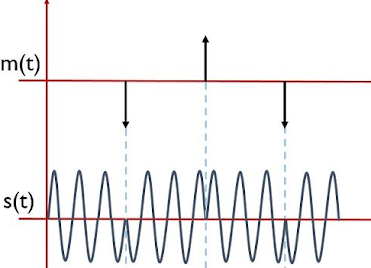Analog Modulation in Communication Systems
🔊 Analog Modulation Explained: AM, FM & PM Demystified with Real-World Applications
Analog modulation is the backbone of traditional communication systems. Whether it’s your old-school radio or walkie-talkie, analog modulation made it possible to send voice, music, and data over long distances — long before digital took over.
📌 What is Analog Modulation?
Analog modulation is the process of modifying a high-frequency carrier wave (usually sinusoidal) to carry analog information, like sound.
It changes one of the three parameters of the carrier wave:
-
Amplitude
-
Frequency
-
Phase
How it works:
-
The amplitude (height) of the carrier wave changes in proportion to the signal (e.g., your voice).
Used in:
-
AM Radio (540 kHz – 1600 kHz)
-
Early aviation communication
Pros:
-
Simple circuitry
-
Long-range
Cons:
-
Poor sound quality
-
Prone to noise and interference
Real-life Example:
Tuning into an AM radio station and hearing a cricket commentary — the signal you hear is amplitude-modulated sound.📻 2. Frequency Modulation (FM)
How it works:
-
The frequency of the carrier wave varies with the signal while amplitude stays constant.
-
FM Radio (88 MHz – 108 MHz)
-
Audio broadcasting
-
TV audio signals
Pros:
-
Better sound quality
-
Less susceptible to noise
Cons:
-
More complex circuits
-
Larger bandwidth required
Real-life Example:
Your car's FM radio delivers high-quality music because FM is less affected by engine noise or lightning.
📶 3. Phase Modulation (PM)
How it works:
-
The phase of the carrier wave shifts based on the signal.
-
Rarely used standalone in analog systems
-
Forms the basis for Digital Phase Modulation (like PSK)
Pros:
-
Good noise resistance
-
Used in digital systems
Cons:
-
Harder to implement
-
Not common in basic analog communication
Real-life Example:
PM is used as a steppingstone in many digital modulation schemes for cellular networks and satellite comms.
🧠 Why Analog Modulation Still Matters
Even in the digital age, analog modulation is:
-
Easy to understand for beginners
-
Used in legacy systems like aviation radios and amateur radios
-
A foundation for digital modulation techniques (like QAM and PSK)
💬 Final Thoughts
Analog modulation may seem old-school, but it's the gateway to understanding communication systems — and a must-know for any electronics enthusiast.
🔁 Mastering AM, FM, and PM builds a strong foundation for:
-
DSP (Digital Signal Processing)
-
SDR (Software Defined Radio)
-
Advanced communication systems like 5G & satellites
📘 What’s Next on Hobitronics?
In our next blog, we’ll dive into the world of Digital Modulation — where signals aren’t just continuous waves but streams of intelligent bits.
👉 We’ll give you a brief yet powerful overview of key digital modulation techniques like:
-
ASK (Amplitude Shift Keying)
-
FSK (Frequency Shift Keying)
-
PSK (Phase Shift Keying)
...and more!
Stay tuned to Hobitronics as we bridge the analog and digital worlds of communication! For more follow hobitronics.blog !!













CFBR❤️
ReplyDelete❤
Delete